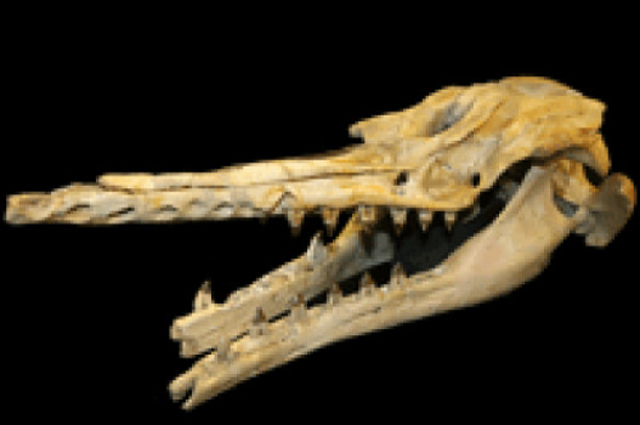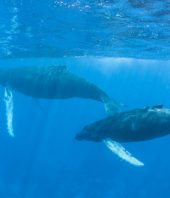Research led by an anatomy professor at New York Institute of Technology College of Osteopathic Medicine indicates that echolocation -- the sonar-like system based on high-frequency vocalizations and their echoes -- was present in a 28-million-year old relative of modern-day toothed whales, dolphins, and porpoises.
Associate Professor Jonathan Geisler led the study of a new fossil species, Cotylocara macei, discovered near Charleston, SC. His findings, together with those of co-authors Matthew Colbert (University of Texas at Austin) and James Carew (College of Charleston), were published online today in the journal Nature.
"The most important conclusion of our study involves the evolution of echolocation and the complex anatomy that underlies this behavior," said Geisler. "This was occurring at the same time that whales were diversifying in terms of feeding behavior, body size, and relative brain size."
Toothed whales, dolphins, and porpoises produce their high-frequency vocalizations through a constricted area in the nasal passages below the blowhole, while all other mammals, including humans, produce sounds in the larynx. The sound-producing mechanism in toothed whales is complex, with large muscles, air pockets, and bodies of fat all packed into a small area in the face.
Scientists have long-studied how complex adaptations evolve, and new fossil discoveries often reveal that adaptations evolve in a step-wise fashion, often over long periods of geologic time.
Geisler said their study of the skull of Cotylocara macei has led them to conclude that this whale echolocated.
"Its dense bones and air sinuses would have helped this whale focus its vocalizations into a probing beam of sound, which likely helped it find food at night or in muddy water ocean waters," said Geisler.
NYIT's College of Osteopathic Medicine's whale evolution website includes a new page on Cotylocara.
After detailed comparisons with living and fossil whales, Geisler and his colleagues determined that Cotylocara belonged to an extinct family of whales that split off from other whales at least 32 million years ago. Their new discovery, when viewed in the context of the entire toothed whale family tree, implies that a rudimentary form of echolocation evolved in the common ancestor of Cotylocara and other toothed whales, between 35 and 32 million years ago. Once it evolved, the fossil record indicates that there was a progressive increase in size and complexity in the air sacs and muscles that controlled the sound generating apparatus in the face.
Cotylocara had some unique features, says Geisler, including a deep cavity on the top of its head (leading to its name, loosely translated as "cavity head") for an air sinus that that stored air while diving and may have reflected sound generated in the face. There is also a radar-dish-like shelf of bone around the nasal openings that could have reflected sound and improved its echolocation ability.
"The anatomy of the skull is really unusual. I've not seen anything like this in any other whale, living or extinct" Geisler said.
New York Institute of Technology. (2014, March 12). New fossil species: Origin of toothed whale echolocation. ScienceDaily. Retrieved March 13, 2014 from www.sciencedaily.com/releases/2014/03/140312150103.htm



